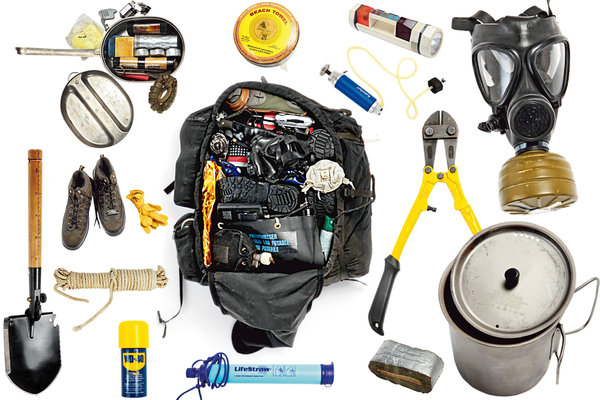By Madison Hill
I’m usually not a glutton for punishment; I do my best to avoid any negative circumstance that could affect my positive chi. When I asked my mother to move in with me, though, I knew I was asking for a bigger dose of an already tough situation.
After mom received her Alzheimer’s diagnosis, I knew that it was only a matter of time before I’d have her move in with me. She’d insisted from the outset of our discussions that she wanted to go to a nursing home so she wouldn’t be a burden to her family. Maybe it was selfish, but I wasn’t ready to let her go.
I’d never been a caregiver before, and hadn’t lived in a home with my mom since I was 18. I thought that I had at least some idea of what to expect. I knew that it wouldn’t be easy; this would likely my most difficult endeavor to date. I expected mood-swings, conflicts, and moments of intense sorrow. I expected to have to change much of what I did on a day-to-day basis, and I was aware that I could fail miserably.
Despite all that I thought I knew, I have gradually come to realize much more that I didn’t know. I could probably fill a novel with everything I learned moving mom in with me, so instead, I’ve summarized a couple of the biggest changes we encountered in the hopes that they will help all of you, too!
1. Borrow Inspiration from the Doomsday Preppers
We were very fortunate that our home didn’t require any huge remodels or additions in order to care for mom. We did, however, dedicate an impressive amount of time to making some essential overhauls so that as the disease progressed, we’d be prepared for (almost) anything. Some of the adjustments we made included:
progressed, we’d be prepared for (almost) anything. Some of the adjustments we made included:
- Equipping our house with plenty of lights, including night-lights for hallways and mom’s bathroom—we want to reduce the risk of falling as much as possible.
- Setting up mom’s room with her bed, dresser, pictures, etc. Our hope is that having her personal items in the room makes it feel more familiar and homey to her. Same for her bathroom. I also made it a point to put an abundance of blankets in her bedroom so that she could layer up as/if needed.
- Removing the existing door handles with locks and replacing them; the last thing we wanted was for mom to lock us out of her room (or lock herself in). Additionally, we installed an internal security system that would alert us if a window or door was opened after the alarm was set.
- Installing handles in her bathroom next to the toilet and in the shower. We also eventually got a shower chair.
- Placing a grip-pad under the various rugs throughout the home.
- Removing blinds with cords and instead adding curtains.
Despite doing this, we were still sorely unprepared for some things (like mom trying to cook on the stove). Making these changes before your loved one moves in is both easier and essential (in my opinion).
2. Space Case
With the changes mentioned in step one, my home doesn’t always feel like home. I occasionally forget when we turn the security system on and set the alarm off myself. Or I’ll go to lock my bedroom door for just five minutes of alone time, and I can’t. Although mom has her own room and bathroom, but she is always home. I know it seems blatantly obvious (where else would she be, right?)—but it was initially a huge departure from the come-and-go-as-you-please nature of my family that I had grown accustomed to. I don’t get quiet time at the house anymore (unless I make prior arrangements), and some days, it feels like every room is the size of a mailbox with another person right on your heels. Additionally, since mom’s consistently home, she has ample opportunity to make a mess. There are pieces of her in every room; pills in the medicine cabinet, food in the fridge, clothes in the laundry room, blankets on the couch, etc. Be prepared to embrace the idea that space-sharing is a part of caring (or at least caregiving).
3. Phone Home
We debated back and forth on whether we were going to put a landline in mom’s room or pay for a cell plan instead. It was important that we give mom as much independence as possible; we didn’t want her to feel trapped or restless. We had mutually agreed that we wanted to give her the chance to keep in touch with her friends and other family members at her leisure, while still keeping an eye on who she was calling (no random 911 calls, please!) and keep a handle on the bill (no random calls to India, either). For our situation, we decided that the best option (for now) would be to give mom her own cell phone. Once her cognitive abilities decline to a certain point, we will then transition into having her use a landline located in her bedroom.
We had mutually agreed that we wanted to give her the chance to keep in touch with her friends and other family members at her leisure, while still keeping an eye on who she was calling (no random 911 calls, please!) and keep a handle on the bill (no random calls to India, either). For our situation, we decided that the best option (for now) would be to give mom her own cell phone. Once her cognitive abilities decline to a certain point, we will then transition into having her use a landline located in her bedroom.
While we’re talking about communication, we have also decided that we will implement some sort of monitoring system (be it walkie-talkies, monitors, etc.) as the disease progresses. It is imperative that mom be able to get ahold of me—day or night—if she needs something. I know that her definition of “need” will vary greatly from mine on occasion; but I’m just going to have to deal with that as it comes.
I’m still learning my whole way through this journey, but I hope that some of these suggestions will help others with their transition. No matter what, there will be surprises—but the smallest bit of preparation goes miles when it comes to moving an aging loved one into your home.
Madison Hill is a freelance writer with a croquet obsession. When she’s not making homemade kreplach with her mother, you can find her playing the piano and scrapbooking.
